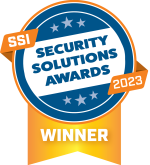If you are in charge of maintaining your company’s systems, you may have questions which require specialized knowledge or expert assistance to answer. Questions like:
“How do I make sure my camera system is working properly?”
“How do I know if my intrusion detection system is still communicating?”
“How do I make sure my access control system is working properly?”
If you are responsible to answer these questions, make sure that you have a checklist of what components in your electronic security system need to be monitored and the frequency (weekly, monthly, quarterly, etc.) they should be checked. Video surveillance, access control, and intrusion detection maintenance tips for these three types of systems are important, and often get overlooked.
Routine maintenance of these critical systems is essential to ensuring they function flawlessly when required and can provide you with a better return on your investment from your electronic security solution. The list below provides nine important things to keep in mind when compiling your maintenance checklist and will help you answer the initial 3 questions asked above.
- Time and Date: System clocks must be accurate on all devices which keep time or timestamped records. If possible, time and date should be automatically synchronized to a network time server or other systemwide time standard. This is critically important for any device which produces records that may be called into evidence in court or used in other official investigations.
- Software & Firmware Updates: Nearly all physical security systems either run from PC-architected servers or have computerized server functions controlled by software and/or firmware and are critically dependent upon being properly updated for proper function and reliable security protection. In modern systems, even “edge” devices like network cameras, card readers, or alarm keypads are likely to be dependent on software or firmware. PC-architected servers may fall under your company’s IT department’s control in which case updating should be coordinated with them. Edge devices often do not and may require manufacturer-certified support services to keep current.
- Visible Damage: Visible damage may indicate a device’s physical protection has been compromised, especially on outdoor equipment which requires waterproof integrity. In the case of video equipment, visible damage to equipment covers or lenses can obscure parts of the image. Additionally, allowing damaged equipment to go unrepaired can make a facility look unmaintained, presenting an attractive target to would-be intruders.
- Clean Lenses, Illuminators, and Lens Covers: Even if not damaged, camera and detector lenses, motion detector IR lenses, infrared illuminator lens ports, and other similar devices must be routinely cleaned to work properly. Many of these need specialty cleaning supplies or techniques to avoid damage while servicing and are mounted in locations which are difficult or hazardous to access without special equipment or training.
- Batteries: Many system components use batteries of varying sizes and types, either for primary or back-up operating power, or to store critical variables during power interruption. Nearly all require periodic replacement and should be replaced prior to their end-of-expected-life to guarantee the device will always work as required, when required.
- Obstructions: Cameras, illuminators, and sensors of many types must have an unobstructed field of view in order to provide the system’s designed coverage. Controlled doors cannot operate properly if blocked open, or blocked closed, or if automatic closers do not work properly. Be aware that a common method of attempting to defeat camera or alarm systems is for intended intruders or other bad actors to first intentionally block coverage areas of sensors to conceal illicit activity planned for later.
- Warranty Awareness: Most system components include some level of manufacturers’ warranty and many of these can remain in force for multiple years. This warranty type typically does not include the labor required to remove, ship, or track the status of the original part, or to receive and install replacements or repaired items, and manufacturers’ warranties can take a long time to be fulfilled.
- Data Backups: System programming and recorded data can represent a significant investment in time and can be irreplaceable if lost to a device failure. The definition of what data is critical varies from user to user, but most commonly system programming, cardholder databases, intrusion system user codes and history, transaction audit records, and other complex or hard-to-reproduce data must be backed up according to a schedule dictated by the maximum acceptable loss of records, and these backups must also have a method of validating the information being backed up. Because of the volume of data involved, recorded video data is not commonly backed up physically unless required by regulation, but systems which provide for redundant storage of this information in the form of RAID arrayed storage or off-site cloud storage is quite common. Correct operation of these features should be periodically verified. Note that various privacy laws may limit or prevent certain data from being retained beyond limits: legal authorities familiar with the specific industry and local regulations should be consulted when creating a backup plan.
- Partner with a Trusted Advisor: Selecting a security system integrator that partners with you in an ongoing relationship past the first installation is critical. These trusted advisors can offer remote admin services to manage the ongoing maintenance of your electronic security components for reduced system downtime and save you money on service truck rolls for something that can be fixed remotely.
If you are looking for a new integrator that will partner with you for success, give NAVCO a call. We would love to meet with you, uncover your existing pain points and provide a no obligation assessment of how we can help. For more information or to schedule an assessment, please fill out and submit the web form below.
>


